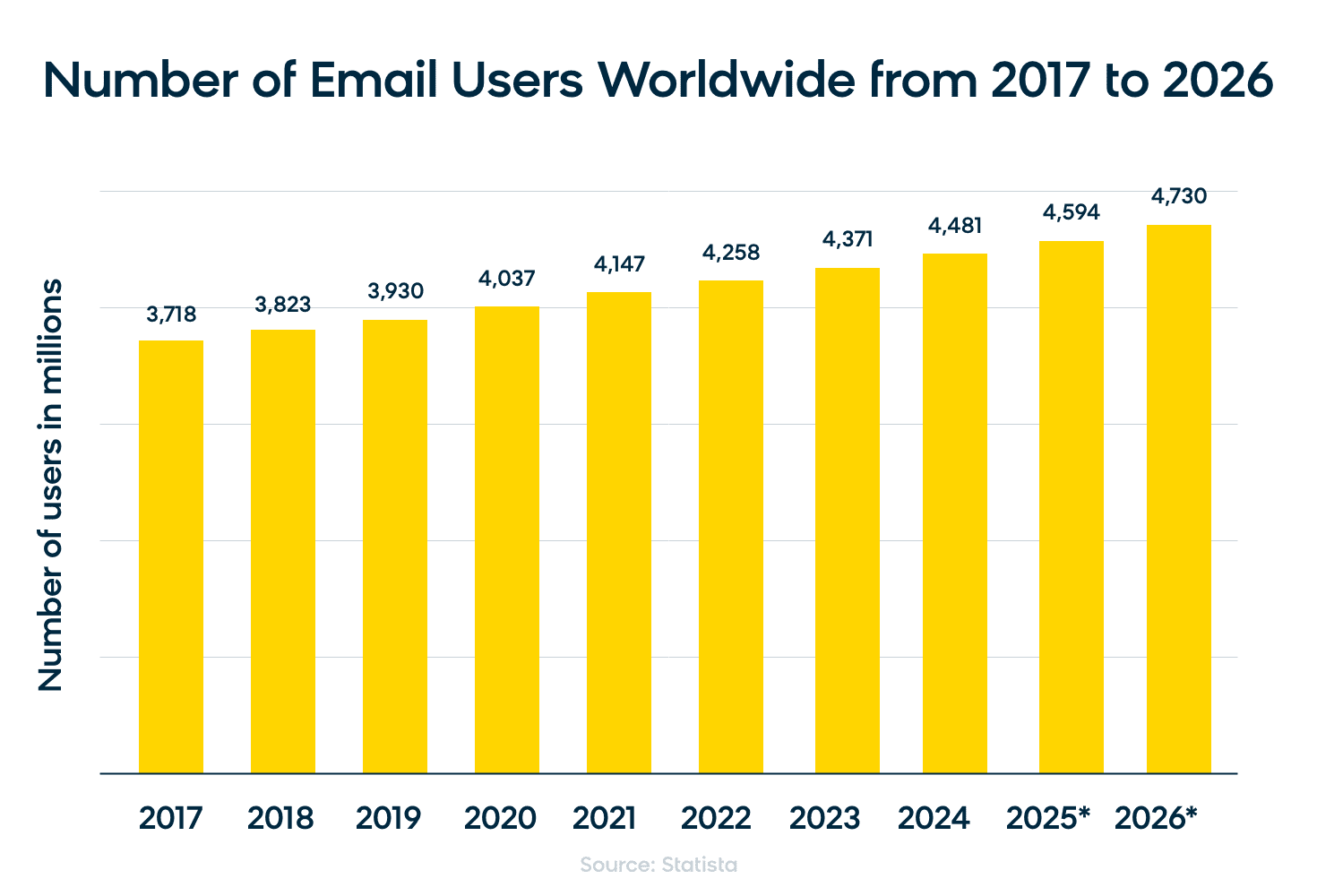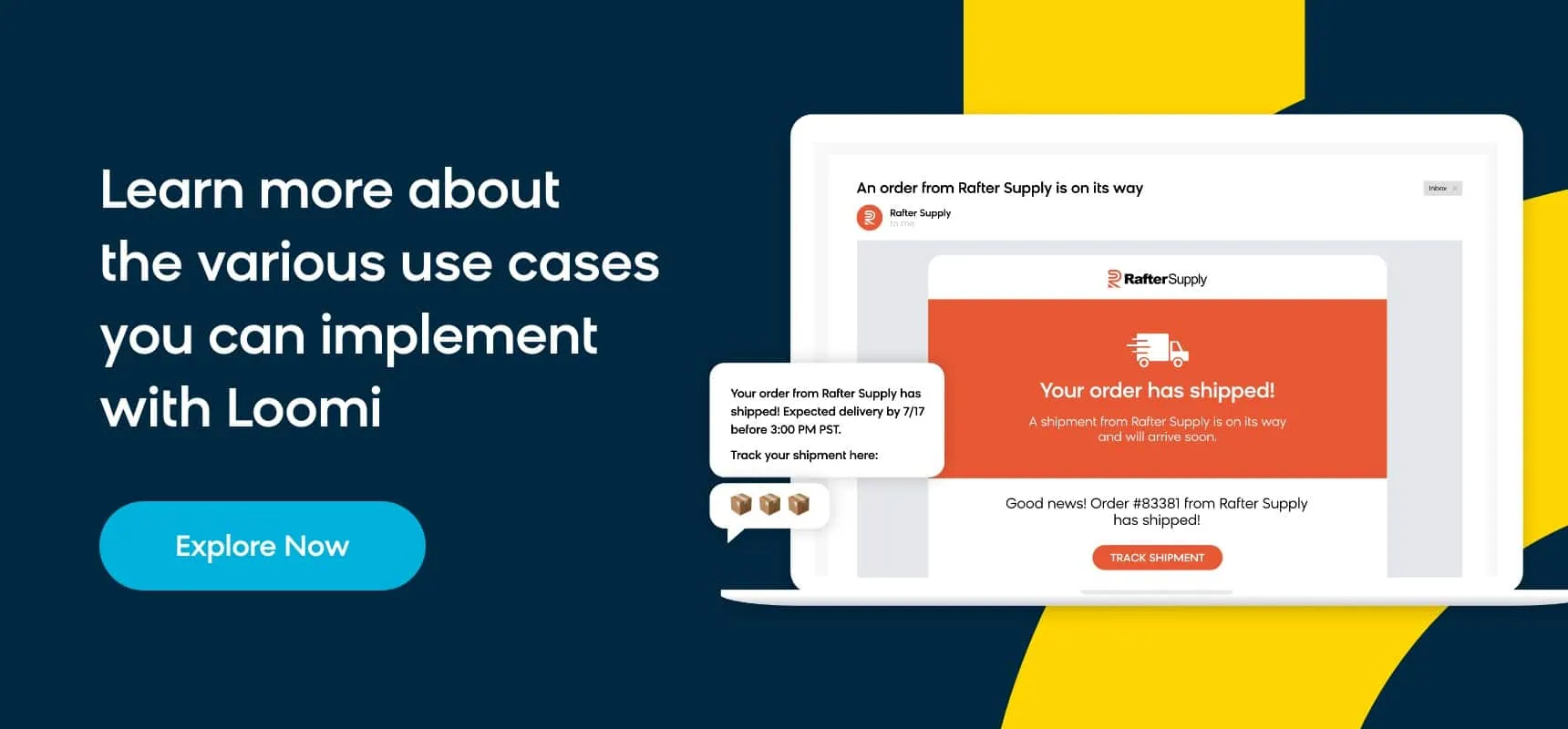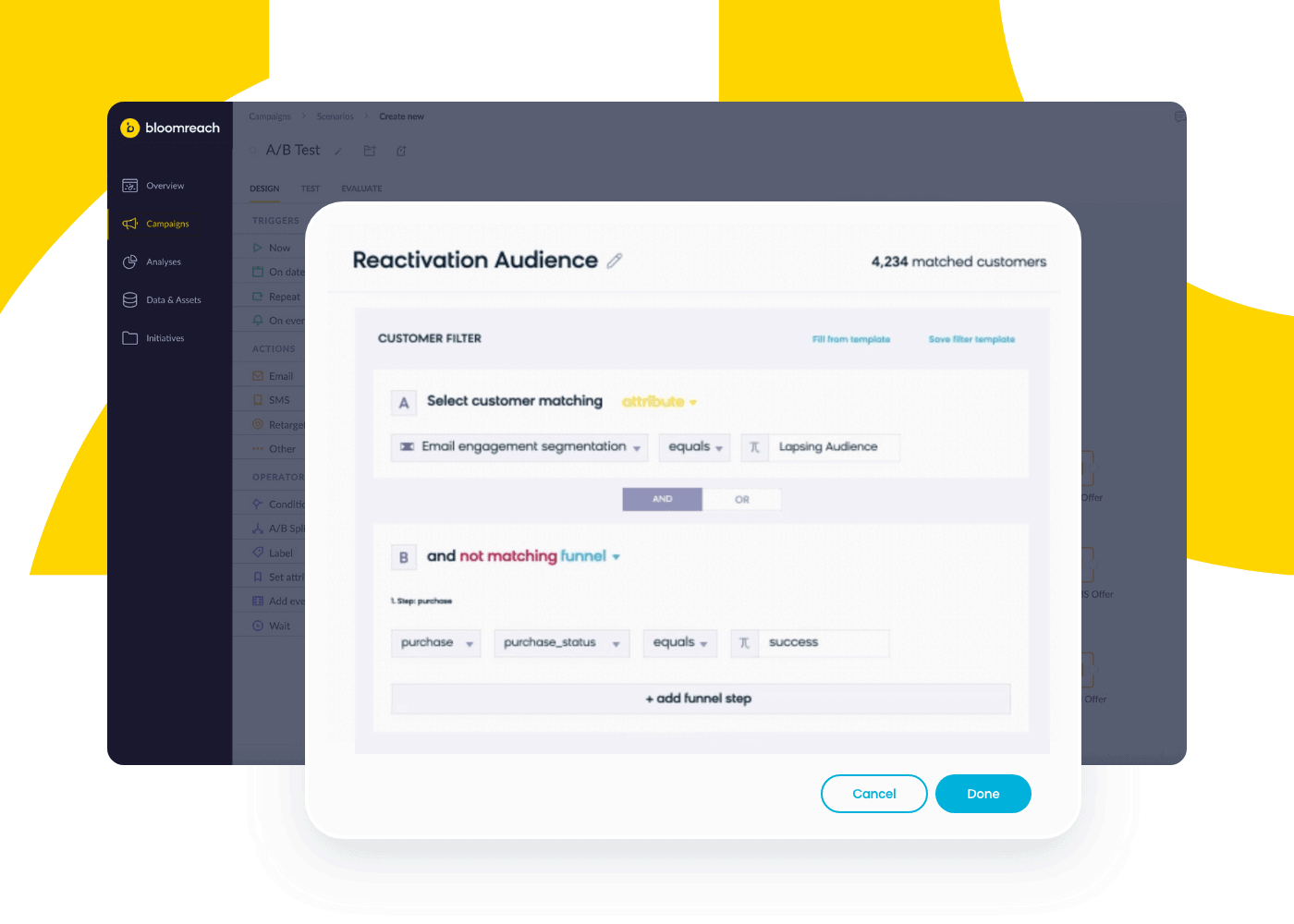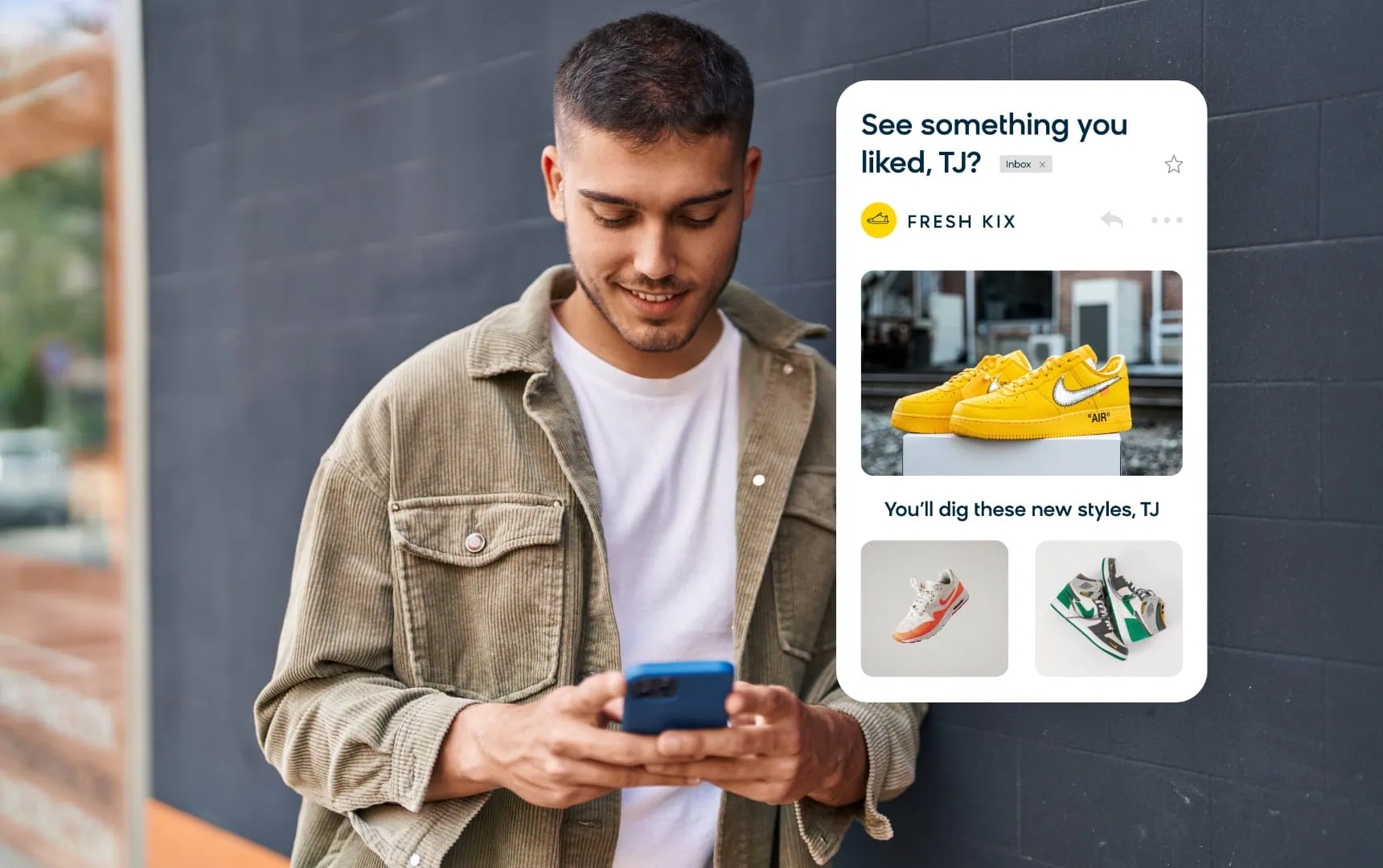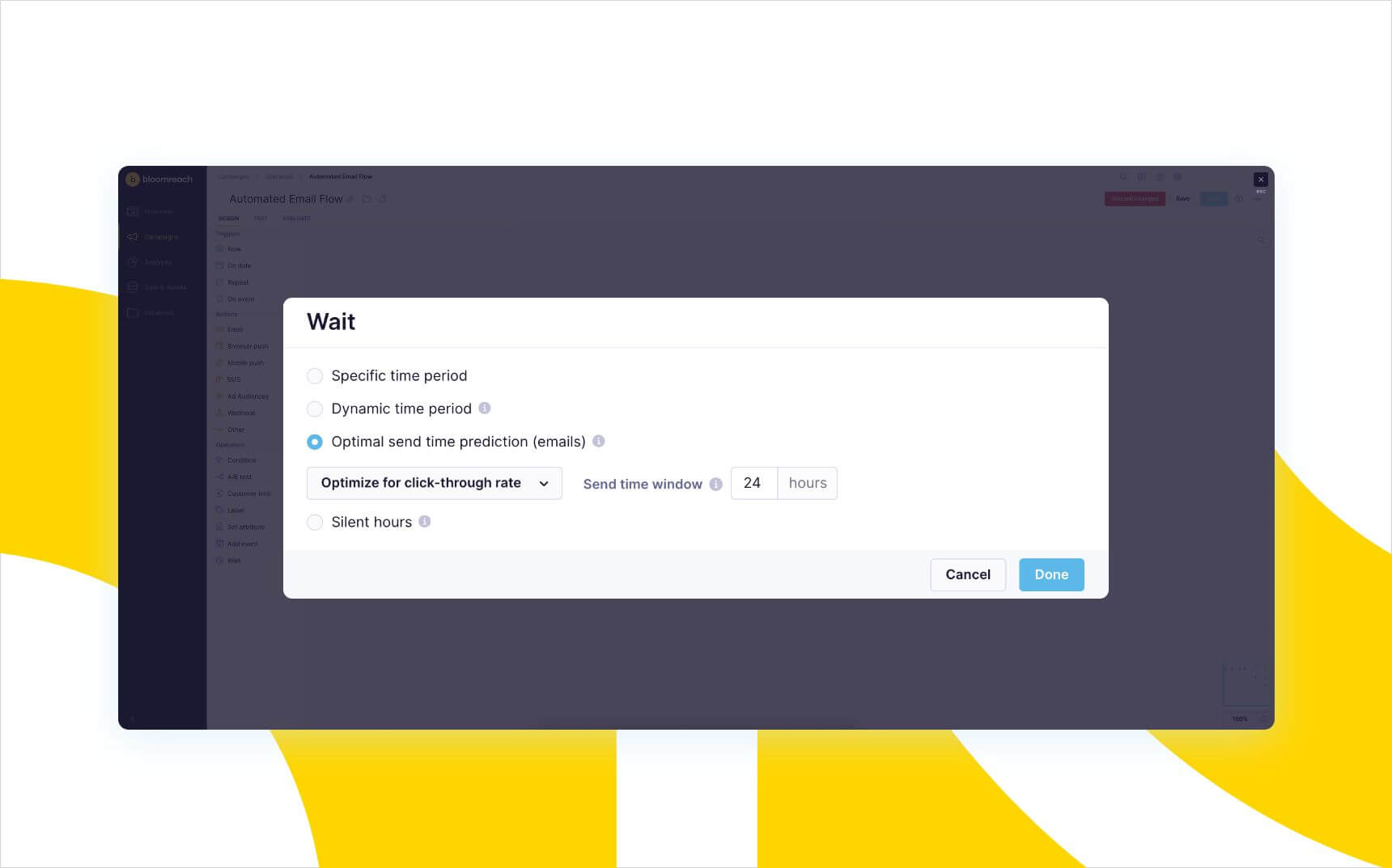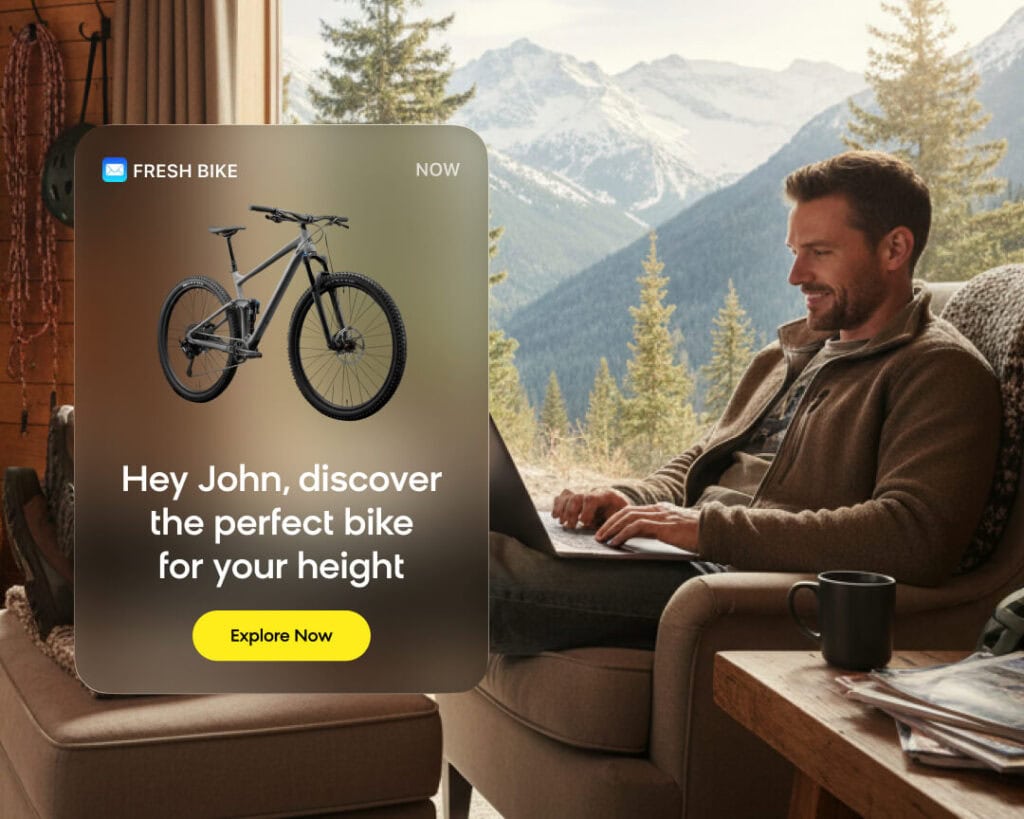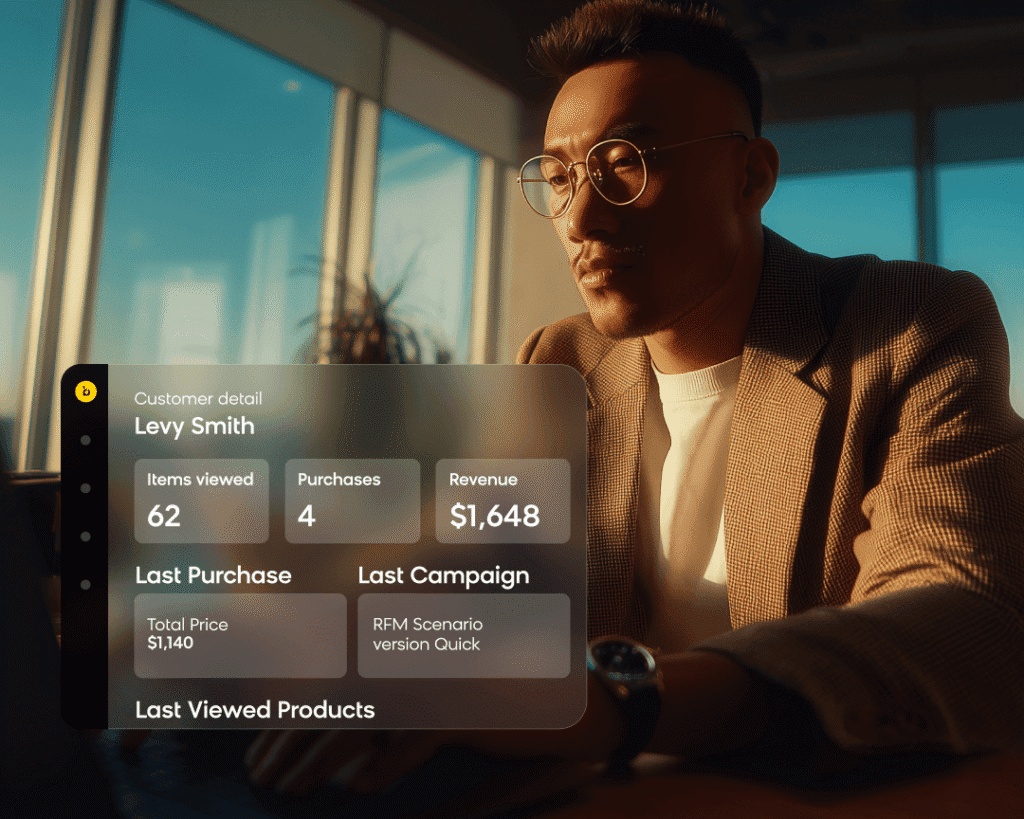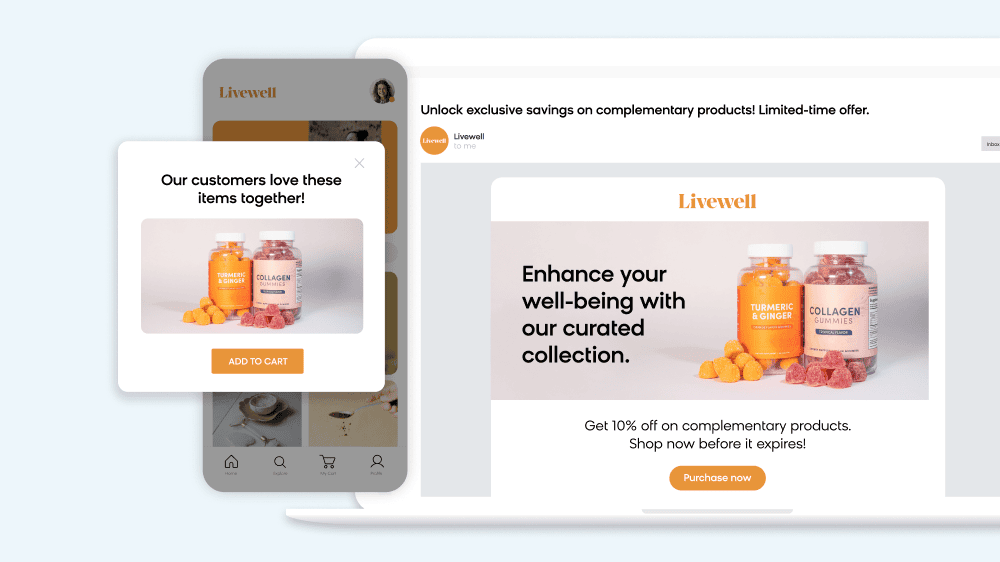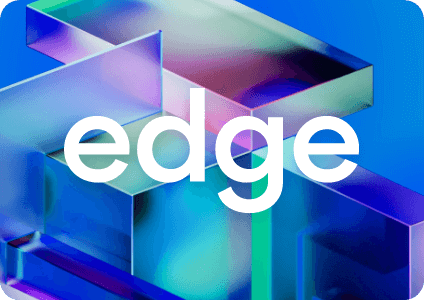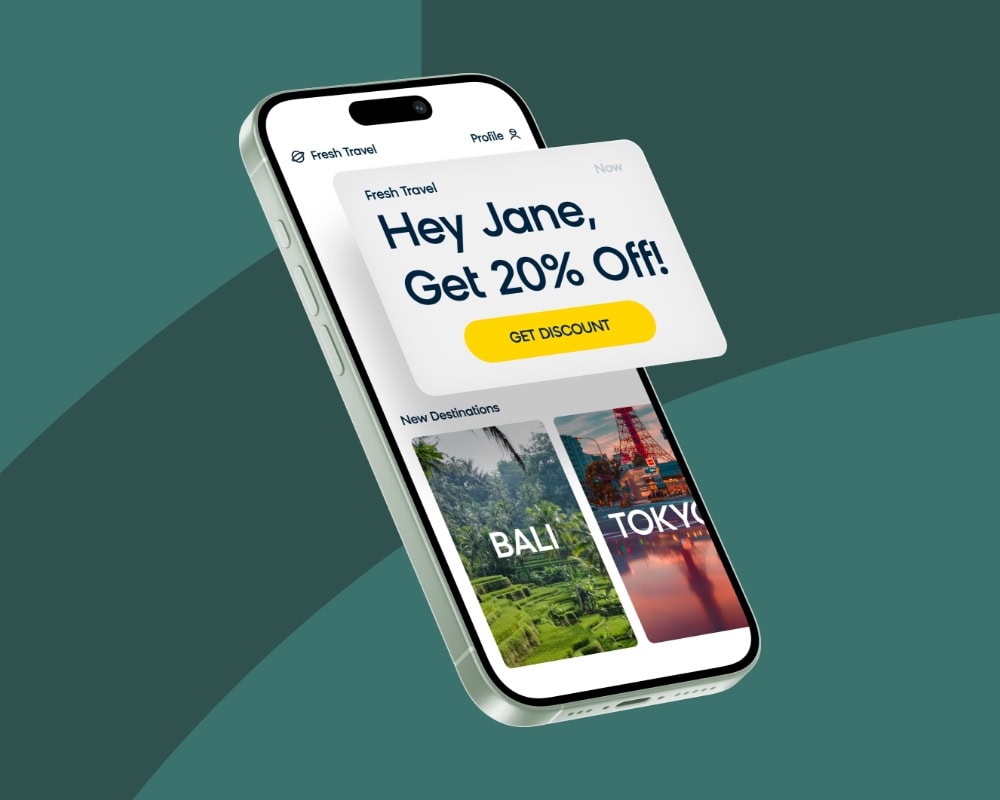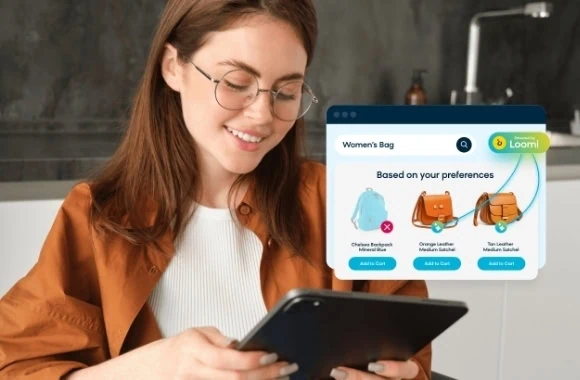Artificial intelligence (AI) is on every marketer’s mind right now, and for good reason. It’s a tool that’s reshaping how marketing works and operates, especially when it comes to AI in email marketing.
But while everyone is eager and anxious to adopt AI, it’s important to understand exactly what you want AI to achieve. The main goal of your AI implementation should always be to make the most effective and efficient strategy, especially when it comes to email campaigns.
In a world where customers are constantly being bombarded with marketing messages on every channel, artificial intelligence can help you hone your email strategy to craft the perfect message for every customer. You can send less and convert more, which is a universal dream for all email marketers.
In this guide, we’ll show you 8 proven AI automation strategies that can transform your email marketing results. You’ll discover how to leverage artificial intelligence to boost engagement, streamline workflows, and drive measurable ROI improvements. From content generation to predictive analytics, these strategies will help you stay competitive in 2025’s evolving email marketing landscape.
The Current State of Email Marketing
Email marketing has traditionally been the best-performing channel for ecommerce businesses, and it shows no sign of losing that title anytime soon. There are approximately 4.83 billion email users worldwide in 2025, with projections to reach 5.61 billion users by 2030, which eclipses the user base of other marketing channels like Facebook, WhatsApp, and Instagram.
This might sound shocking at first when compared to popular social media apps, but when you think about it, this statistic makes sense. Everyone has an email address, and everyone checks it on a daily basis.
Email marketing offers an audience of dedicated subscribers that are engaging with their inbox constantly — 99% of email users check their inbox every day, with some checking as frequently as 20 times daily.
With this level of user engagement, it’s no wonder that marketers continue to rely on email as their go-to marketing channel. Email delivers exceptional ROI, with businesses seeing returns of $36 to $40 for every dollar spent in 2025. And when it’s paired with the capabilities and promise of artificial intelligence, you can optimize and streamline email campaigns to make sure every message makes a big impact.
How AI Automation Is Changing Email Marketing
Like every other aspect of modern marketing, AI is changing the status quo of email. Once a novel idea, incorporating artificial intelligence and machine learning into your marketing automation strategy is now paramount for keeping your email campaigns as relevant as your customers expect.
Here are the key ways that artificial intelligence is quickly becoming an essential part of every marketer’s daily tasks.
Generative AI Has Revolutionized Content
When you think of AI, you’re most likely thinking of content generation tools like ChatGPT or something similar. These AI tools, which can instantly craft high-quality and human-like text responses to conversational queries, have changed the game when it comes to designing compelling, targeted content for marketing emails.
If you’re just beginning to adopt AI into your email marketing workflow, this is most likely where you’ve started. With a few simple prompts, these content generation apps can cut down on valuable time and help streamline the content process — you can use it to write email subject lines, promotional copy, and more.
And once you’ve incorporated AI tools like ChatGPT, it’s all but guaranteed to become a staple of your marketing strategy. 95% of marketers who use generative AI for email creation rate it “effective,” with 54% rating it “very effective.”
AI-Powered Automation Unlocks True Personalization in Email Marketing
While ChatGPT is at the forefront of the buzz around artificial intelligence, AI-powered marketing automation is just as game changing as these content tools, if not more so.
Algorithmic analysis makes it possible for marketers to collect, analyze, and interpret data from customer interactions and buying behaviors at an unprecedented speed and scale. With all of this information, generative AI can create dynamic content that speaks directly to each customer — all while improving over time and learning from each new interaction.
For email marketing, this can have a massive influence on the way your audience is segmented, what email automation flows and content they’re served, and how their responses to your campaigns affect future communications. All this is automated with AI, so you don’t need to spend all your time and energy mapping these relationships out yourself.
The bottom line is, true personalization is only possible with AI automation, which opens up your ability to vary your emails and tailor your campaigns to each individual subscriber.
Variation and testing is the key to personalized experiences. The more sophisticated your personalization goals get, the more variations you will need in your email campaigns to better suit each customer’s wants and preferences. Truly personalized email campaigns have to adapt and learn from your audience’s interactions, testing and refining as they go.
For modern ecommerce businesses, this level of personalization is impossible to do without the power of AI. You need artificial intelligence to reach and retain customers who have grown to expect completely personalized experiences with the brands they love.
8 AI Email Marketing Automation Strategies That Boost ROI
Strategy 1: AI-Powered Content Generation and Subject Line Optimization
AI-powered marketing platforms can analyze historical performance data and customer behavior to generate optimized email subject lines. These tools use predictive analytics to determine which subject lines are most likely to drive opens based on your audience’s preferences.
With Bloomreach Engagement’s AI content generator, you can create optimized marketing content directly in our email campaign editor. Powered by ChatGPT, this tool can cut down on manual time by helping you generate content ideas, alternative subject lines, and multiple CTAs to test.
Strategy 2: Predictive Customer Segmentation
Machine learning personalization tools excel at analyzing customer data to create intelligent segments. Rather than relying on basic demographics, these AI platforms identify behavioral patterns and predict future actions. Solutions like Bloomreach Engagement use predictive analytics to automatically segment customers based on likelihood to purchase, churn risk, and engagement levels.
Every marketer knows that creating segments can be a challenging process. Sifting through an endless stream of data to organize your customers into relevant groups can eat up valuable time and energy for your marketing team.
With a tool like Bloomreach consolidating all your customer data into a single customer view, marketers can leverage AI to efficiently identify key segments like lapsing customers, your most loyal buyers, and new subscribers in seconds.
Read This Next: Customer Segmentation: Options Marketers Should Know
Strategy 3: Dynamic Product Recommendations
AI-powered email software can automatically adjust email content, images, and product recommendations in real time based on individual customer data. This includes dynamic content blocks that change based on customer journey stage, location, browsing history, and purchase patterns.
With Bloomreach’s AI tools, you can offer product recommendations that are generated by machine-learning algorithms using insights from past customer behavior data, such as searches, clicks, and purchases. Instead of setting up tedious rule-based recommendations, AI can recommend the most relevant items to a particular customer — and automate the process.
Strategy 4: Behavioral Trigger Automation
Advanced AI tools monitor customer interactions across all touchpoints to trigger perfectly timed email campaigns. These platforms use machine learning to identify the optimal moments for engagement, whether it’s abandoned cart recovery, reengagement campaigns, or cross-sell opportunities.
Key AI-driven behavioral triggers include:
- Personalized recommendations based on browsing history and purchase patterns
- Inventory alerts for favorited or cart-abandoned items when they’re back in stock or on sale
- Loyalty program optimization that automatically sorts customers into tiers based on loyalty status
- Churn prediction campaigns that identify at-risk customers and trigger retention efforts
- Purchase likelihood scoring that adjusts campaign timing and messaging intensity
Strategy 5: Optimal Send Time Personalization
Email marketing is all about timing. If you want to reach your customer when it’s most convenient for them, you can’t rely on the average preferred send time of your entire audience.
Bloomreach’s AI-powered optimal send time feature uses prediction models to determine each customer’s optimal send time for automated email campaigns and stores this data within their individual profile. Your campaigns are sent when each recipient is most likely to open or click, rather than relying on aggregate send times.
Strategy 6: Contextual Email Personalization
The key to any good marketing strategy is testing. Traditional A/B testing helps you fine-tune messaging, subject lines, and visuals, but it has limitations — it finds the best overall variant for your entire audience, potentially missing individual preferences.
Bloomreach’s AI-driven contextual personalization matches the right customer to the optimal message. AI leverages each customer’s context — their clicks, purchases, opened emails, and session data — to select the variant most likely to lead to a conversion.
Strategy 7: Dynamic Email Frequency Optimization
AI can determine the best email frequency based on your customers’ level of engagement and automate the cadence of your email campaigns for each recipient. This prevents email fatigue while maximizing engagement opportunities for highly active subscribers.
Instead of sending the same number of emails to everyone, AI analyzes individual engagement patterns to optimize frequency:
- High-engagement customers may receive more frequent communications
- Low-engagement subscribers get reduced frequency to prevent unsubscribes
- Reengagement campaigns trigger automatically for inactive segments
Strategy 8: Conversational Marketing Integration
Chatbot integration and conversational AI agents are increasingly connecting with email systems to create seamless customer experiences. When combined with email AI software, these tools can trigger personalized follow-up campaigns based on chat interactions, creating a unified conversational commerce experience.
This integration allows for:
- Automated email follow-ups based on chatbot conversations
- Personalized product recommendations from chat interactions
- Seamless handoffs between chat and email touchpoints
- Unified customer profiles across conversational channels
How to Measure the ROI of AI in Email Marketing
Implementing AI in email marketing requires investment, but measuring its impact ensures you’re maximizing returns and optimizing strategy.
Key Metrics to Track
When evaluating AI email marketing performance, focus on these essential metrics:
- Revenue per email – Compare AI-driven campaigns vs. traditional campaigns
- Customer lifetime value (CLV) – Measure how AI personalization impacts long-term customer value
- Time savings – Calculate hours saved through automation and content generation
- Engagement rates – Track opens, clicks, and conversions across AI-optimized campaigns
- Segmentation efficiency – Monitor how AI improves targeting accuracy and reduces unsubscribes
Calculating AI Implementation Costs vs. Benefits
To build a business case for AI email marketing investments, consider this simple ROI framework: cost vs. benefits.
Cost factors: Platform fees, implementation time, training, and integration expenses
Benefit factors: Increased revenue, time savings, improved efficiency, and reduced manual work
Real-World Examples of AI’s Impact
AI’s impact can be game-changing for your email marketing efforts. Here’s how forward-thinking brands are achieving real, measurable results.
The award-winning brewery Brewdog achieved a +13.8% uplift in revenue through AI-powered email personalization, tailoring campaigns based on each recipient’s web activity, loyalty status, and previous purchases.
The online holiday package company On The Beach used AI to personalize its price drop email campaigns. AI monitors the price changes of each customer’s customized travel package — with unique flights, hotels, dates, and more — and triggers personalized campaigns when price drops occur, which led to a 362% uplift in revenue per visitor.
The jewelry brand Ana Luisa incorporated dynamic content blocks into all its email campaigns, which are autopopulated with the power of AI. Each block is personalized with a recipient’s individual member status and available credits, which led to increased engagement and double the amount of member credit redemptions.
These are just a few of the AI-powered wins that brands have seen with the right marketing platform — visit our case studies page to see more proven success stories.
Common Challenges When Implementing AI in Email Marketing
While AI offers tremendous opportunities, understanding potential challenges helps ensure successful implementation.
Data Quality and Integration Complexity
AI platforms require clean, comprehensive customer data to function effectively. Poor data quality can lead to ineffective segmentation and personalization. Additionally, integrating AI tools with existing marketing stacks can present technical challenges.
Solution: Bloomreach addresses this through robust data unification capabilities and pre-built integrations with major ecommerce platforms, CRMs, and marketing tools.
GDPR and Privacy Compliance
AI-driven personalization must balance effectiveness with privacy regulations. Marketers need to ensure customer data usage complies with GDPR, CCPA, and other privacy laws while still delivering personalized experiences.
Solution: Bloomreach provides built-in compliance features, consent management tools, and transparent data usage policies to help businesses maintain regulatory compliance while leveraging AI capabilities.
Skills Gap and Change Management
Many marketing teams lack experience with AI tools, creating adoption barriers. Teams may resist changing established workflows or feel overwhelmed by new technology capabilities.
Solution: Bloomreach offers comprehensive training through Bloomreach Academy, dedicated customer success support, and intuitive interfaces that make AI accessible to marketers at all skill levels.
Over-Automation and Brand Voice Consistency
Without the right input, AI-generated content may lack brand personality or become too mechanical. Finding the right balance between automation efficiency and human creativity is essential for maintaining authentic customer relationships.
Solution: Bloomreach’s AI tools include brand voice controls, human oversight workflows, and customizable parameters to ensure generated content aligns with your brand guidelines while maintaining efficiency gains.
Send Fewer Emails and Make More Money With Bloomreach Engagement
With AI powering your email strategy, businesses can streamline their email efforts while growing revenue at an unprecedented scale.
It’s all about cutting down the time and effort it takes to give your customers exactly what they want from your campaigns. And when you can personalize the content, cadence, and timing of every email for every customer, you only need to send the emails that matter and can focus on quality over quantity.
Bloomreach Engagement’s email platform provides everything you need to build better email marketing campaigns with advanced targeting and AI-powered personalization — without sacrificing deliverability and ease of use.
That’s because Loomi, our AI built for ecommerce, is the connective tissue across our suite of products. It works alongside you to make you more efficient and effective than ever before, helping you deliver hyper-personalized experiences across all channels in the customer journey.
Interested in learning more about the impact that AI can have on your ecommerce marketing efforts? Discover Loomi’s complete AI capabilities to explore use cases and see what our ecommerce AI can do for your business.
FAQs About AI in Email Marketing
What is AI in email marketing?
AI in email marketing refers to using artificial intelligence and machine learning to automate, optimize, and personalize email campaigns. This includes everything from content generation and audience segmentation to send time optimization and predictive analytics.
Is AI email automation GDPR compliant?
Yes, when implemented correctly with proper consent management and data protection measures. AI email platforms like Bloomreach include built-in compliance features to help businesses meet GDPR, CCPA, and other privacy regulations while leveraging customer data for personalization.
Can AI completely replace human email marketers?
No, AI enhances human capabilities rather than replacing marketers entirely. While AI excels at data analysis, automation, and optimization, human creativity, strategy, and brand understanding remain essential for effective email marketing campaigns.
How quickly can I see results from AI email marketing?
Results vary by implementation scope and business size. Dynamic content campaigns can achieve 42% higher open rates immediately upon deployment, while comprehensive AI optimization typically shows measurable improvements within the first few campaign cycles.
What types of businesses benefit most from AI email marketing?
Ecommerce businesses with large customer databases and complex product catalogs see the greatest benefits. However, any business sending regular email campaigns can benefit from AI-driven personalization, automation, and optimization capabilities.



